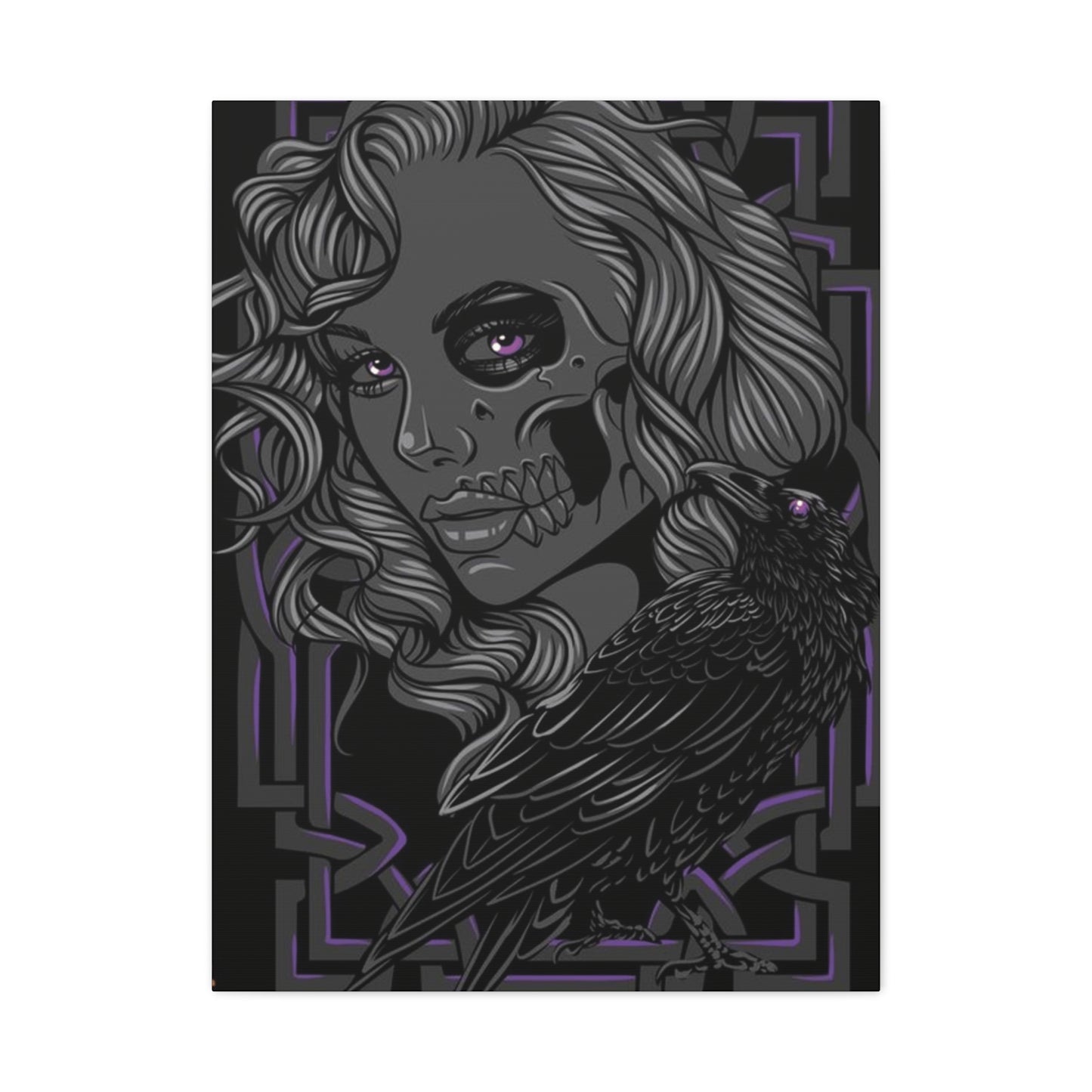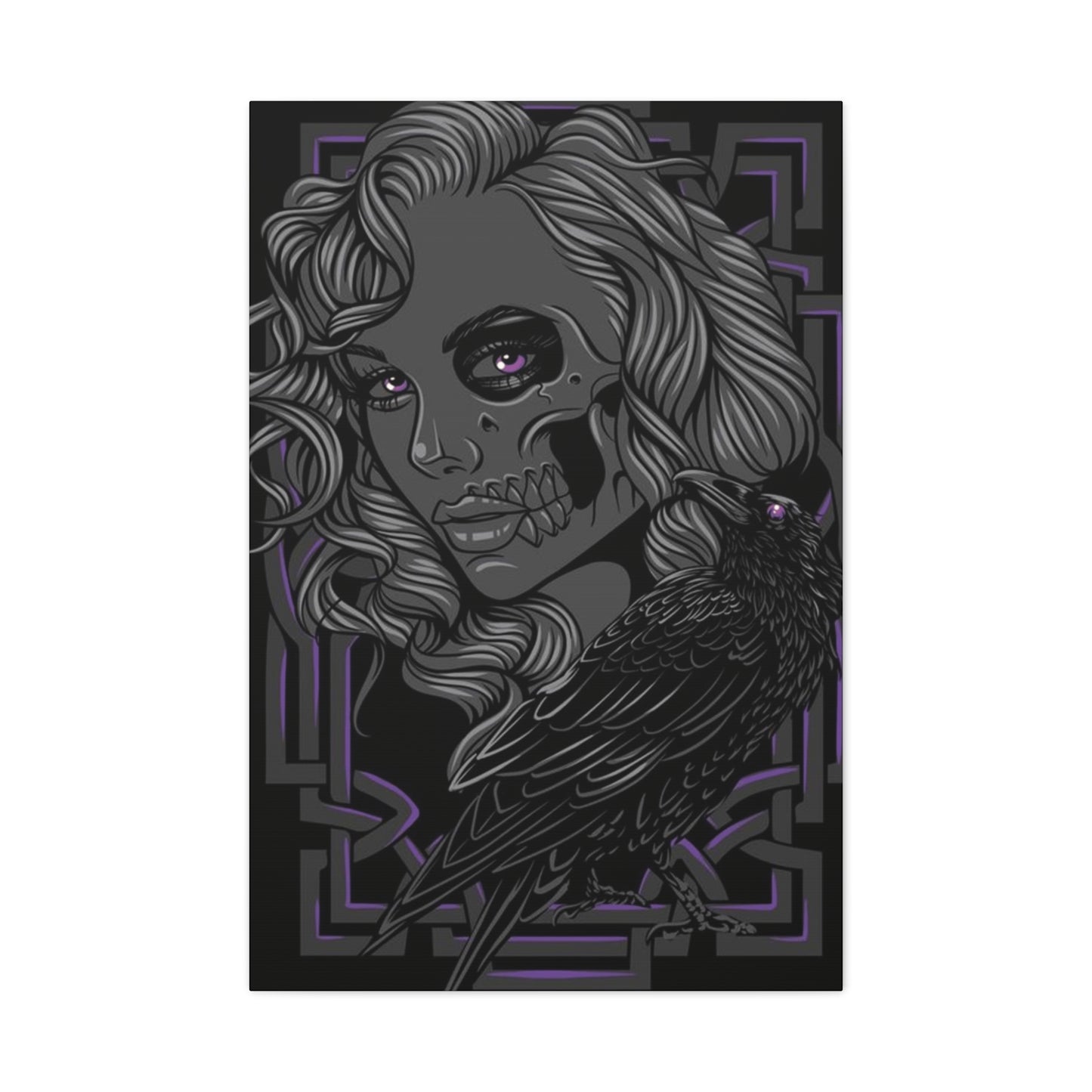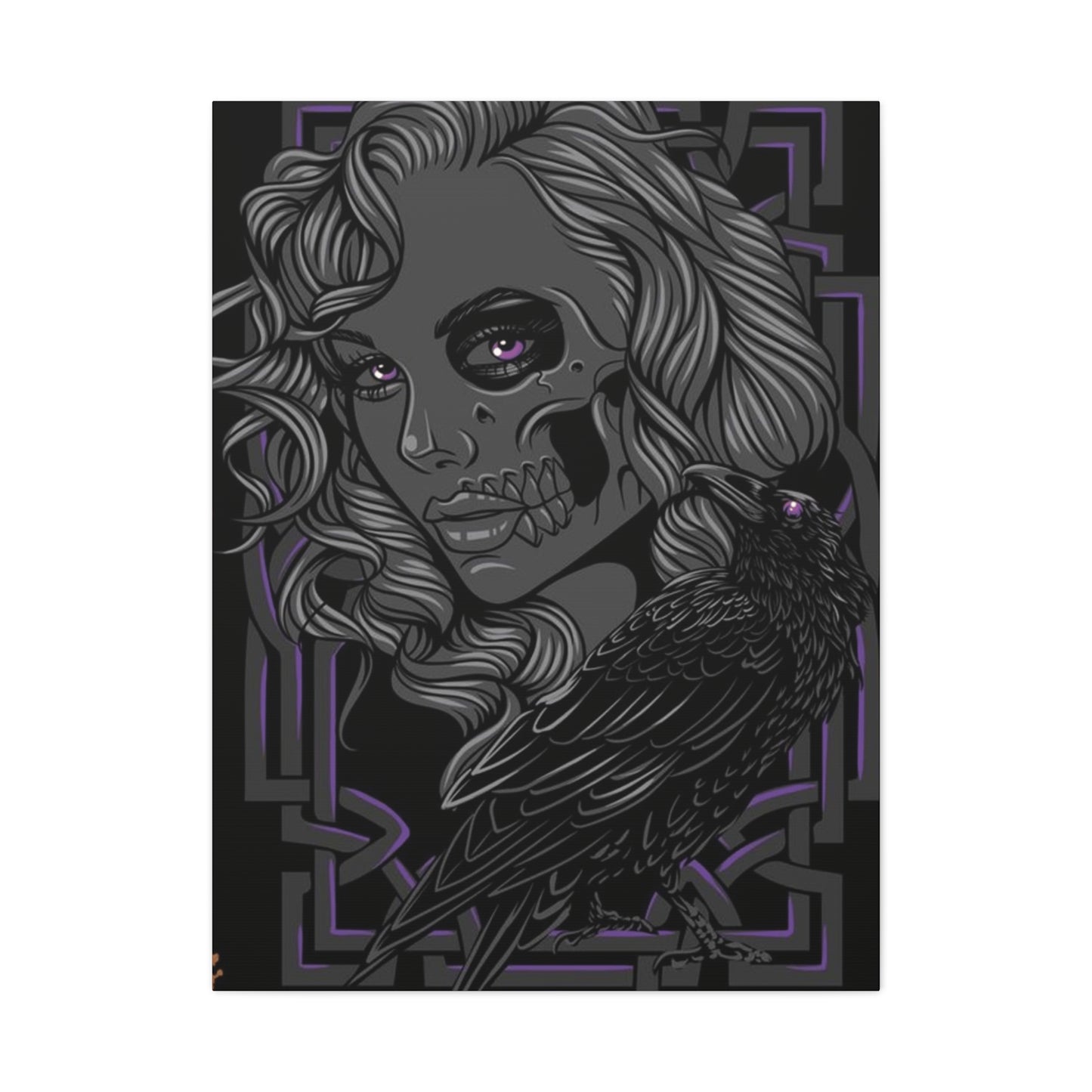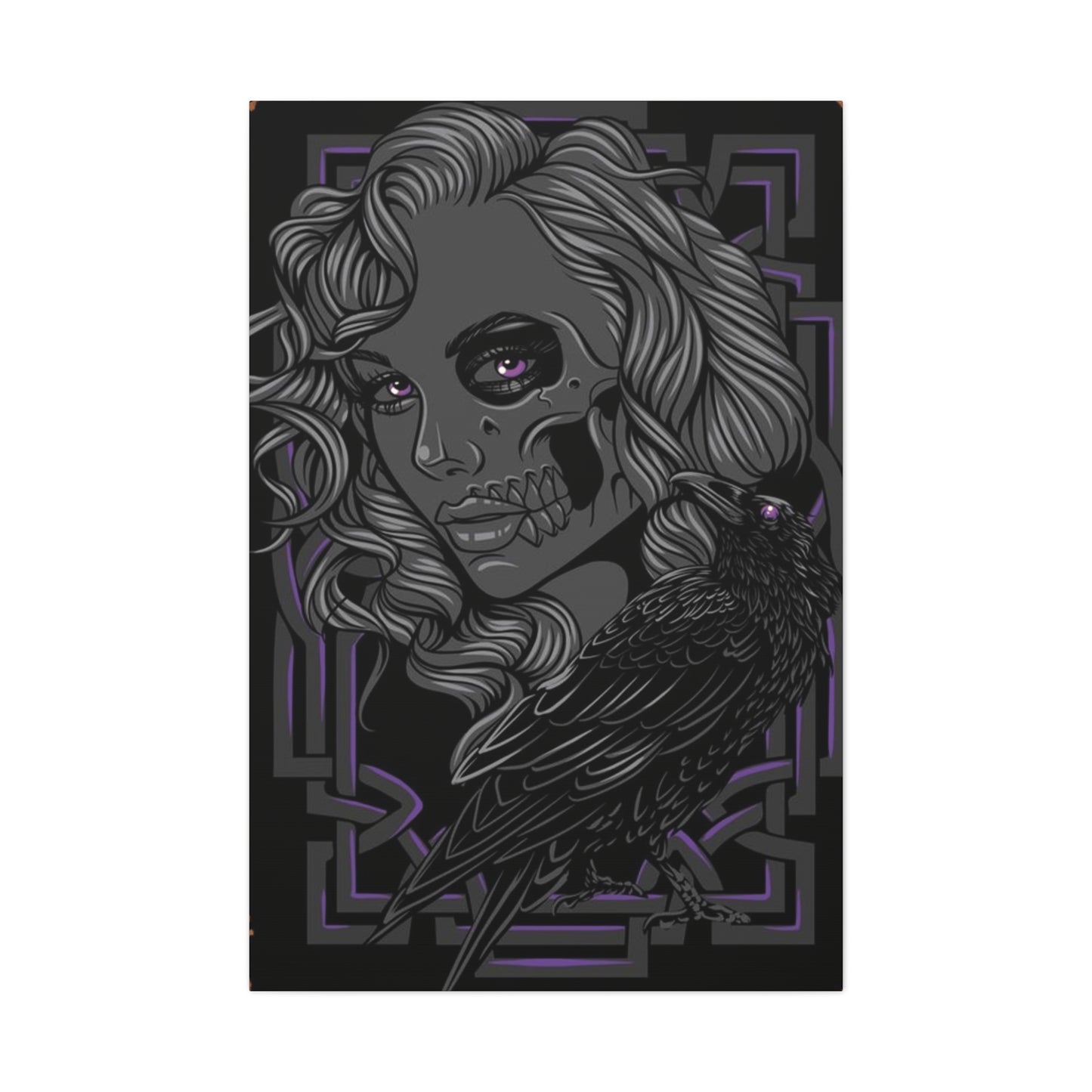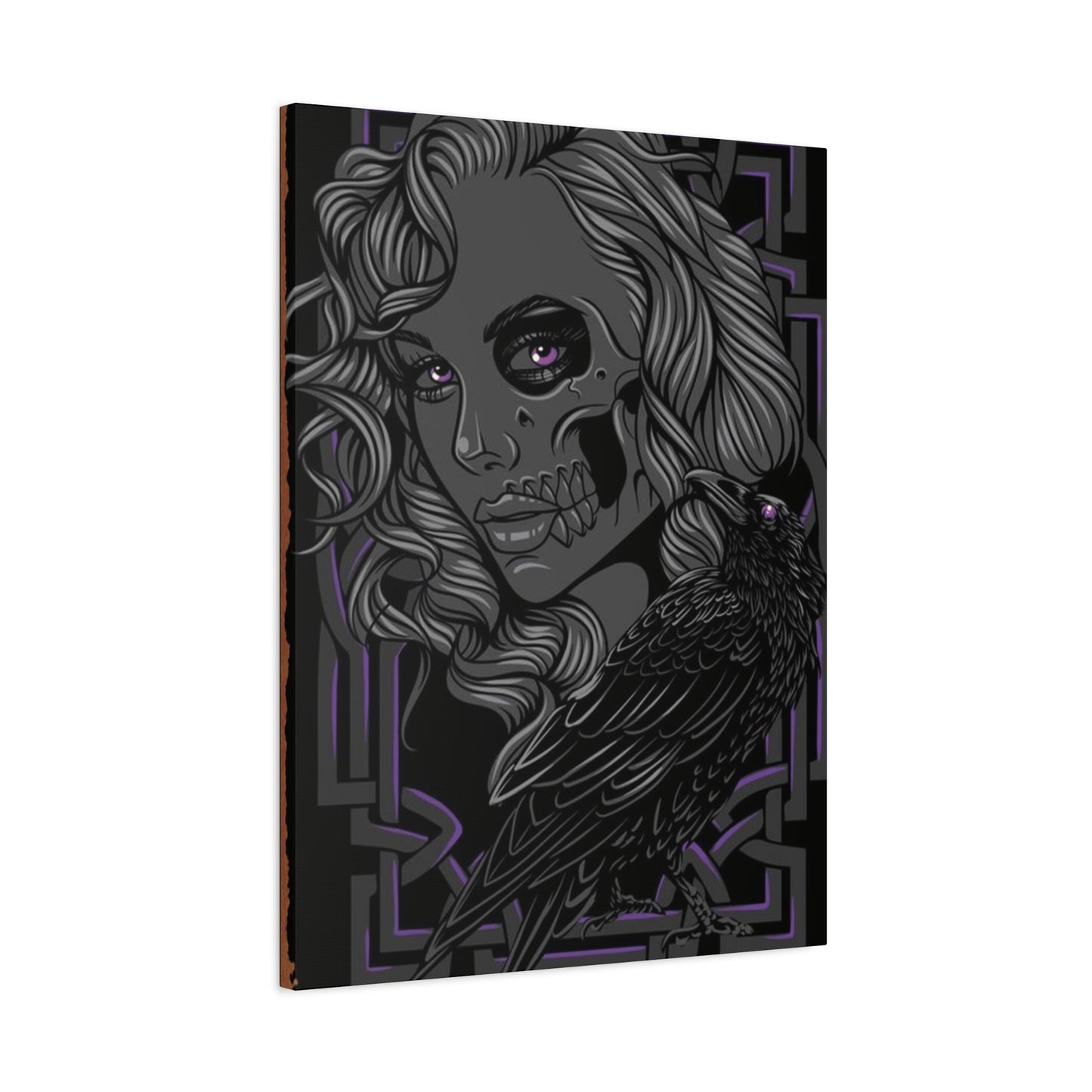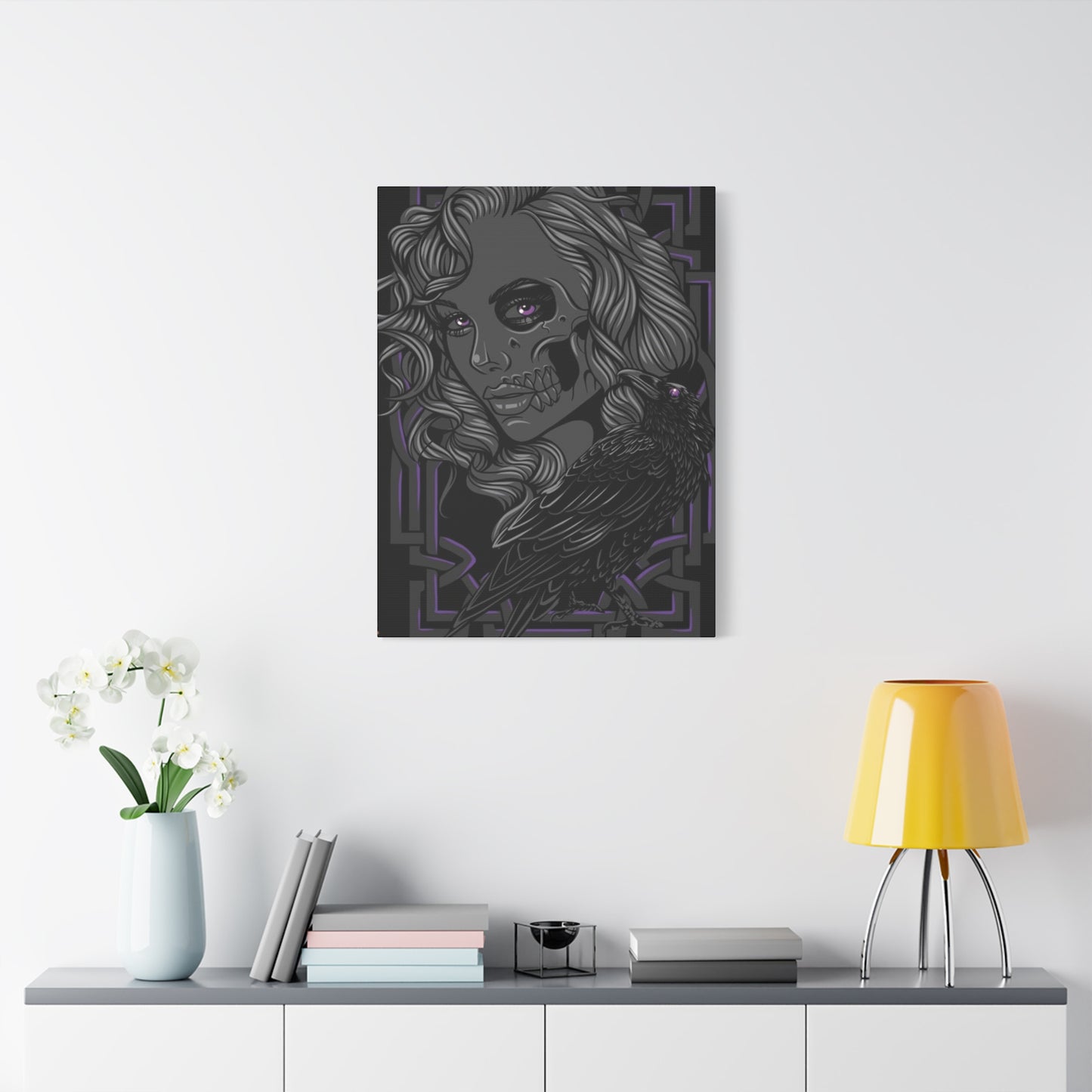Mancave Wall Art: Creating Your Perfect Personal Sanctuary
Creating a personal retreat within your home requires careful consideration of every element, Creating a personal retreat within your home requires thoughtful attention to every detail, and few elements have as much influence over the space’s atmosphere as wall art. Mancave wall art is more than mere decoration—it is the foundation upon which a masculine sanctuary is built, transforming ordinary rooms into extraordinary expressions of individuality. The right pieces not only reflect personal tastes and interests but also establish a cohesive style that reinforces the occupant’s identity and provides a sense of comfort and pride.
The concept of the mancave has evolved considerably in recent years. Once associated with simple, utilitarian spaces focused solely on relaxation or entertainment, modern masculine retreats now blend rugged charm with refined elegance. Men increasingly desire environments that balance raw, traditional masculine elements—such as leather, wood, and metal—with contemporary design sensibilities, including clean lines, modern lighting, and thoughtful color palettes. Wall art serves as the ideal medium to achieve this balance, offering a dynamic way to express personal interests, hobbies, or even life philosophies, while simultaneously enhancing the room’s overall aesthetic.
Selecting the right wall art requires a thoughtful approach. Colors, textures, and themes all play a critical role in shaping the room’s energy. Dark, rich tones can create a sense of warmth and intimacy, while bold, vibrant artwork can inject energy and dynamism into the space. Iconic imagery, such as vintage automotive prints, sports memorabilia, abstract geometric designs, or nature-inspired photography, can help convey personality and set the mood. Personalization is key: incorporating art that resonates on an individual level transforms a space from generic to genuinely unique, reflecting experiences, passions, and achievements.
Beyond aesthetics, the psychological benefits of carefully chosen wall art are significant. Visual elements have a profound impact on mood, focus, and overall satisfaction with a space. Artwork can inspire creativity, spark nostalgia, or foster a sense of calm and relaxation, turning a mancave into more than just a room, but a personal sanctuary that enhances everyday life. Properly arranged pieces also contribute to visual balance, ensuring the space feels harmonious rather than cluttered.
Ultimately, mancave wall art is an essential tool for crafting a space that is both visually striking and emotionally satisfying. Whether emphasizing rugged masculinity, modern sophistication, or a blend of both, the right artwork creates an environment that feels authentically personal. By thoughtfully selecting pieces that reflect style, interests, and mood, any mancave can be transformed into the ultimate personal retreat—a space that invites relaxation, inspires creativity, and showcases individuality in every detail.
Diverse Styles and Themes
One of the most compelling aspects of mancave wall art is the opportunity to explore diverse styles and themes that reflect personality and interests. Industrial-themed artwork, in particular, has gained popularity for its ability to capture the raw energy of urban environments and the precise elegance of mechanical design. These pieces often feature metallic finishes, bold geometric patterns, exposed structural elements, and rugged textures that resonate with masculine sensibilities. From steampunk-inspired illustrations to vintage machinery diagrams and architectural blueprints, industrial artwork provides visually striking focal points that celebrate innovation, engineering, and craftsmanship.
The appeal of industrial aesthetics goes beyond mere decoration. It embodies a philosophy centered on functionality, durability, and substance. Many pieces in this category incorporate salvaged materials, distressed surfaces, or authentic patina, giving them a sense of history and depth. This connection to authenticity resonates strongly in masculine spaces, reflecting an appreciation for items that possess character and tell a story. A well-placed metal sculpture, a framed blueprint of a classic engine, or a wall-mounted gear installation can instantly transform a room, conveying both sophistication and raw strength.
Beyond industrial designs, mancave wall art offers countless other thematic possibilities. Adventure and exploration themes—such as mountain landscapes, vintage maps, and nautical charts—tap into the spirit of curiosity and the outdoors, creating an atmosphere of freedom and excitement. Sports and hobby-focused art, from iconic team posters to abstract representations of favorite activities, can energize a space while reinforcing personal identity. Even abstract and modernist works can be successfully integrated, providing visual intrigue through bold shapes, dynamic lines, and contrasting textures, while complementing more traditional masculine elements like wood, leather, or stone.
Ultimately, the diversity of styles and themes ensures that every mancave can be a unique reflection of its owner. Whether embracing the industrial ethos of strength and craftsmanship, celebrating personal passions, or incorporating elements of contemporary art, the careful selection and arrangement of wall art allows the space to become a true personal sanctuary. It transforms walls into storytellers, expressing character, taste, and individuality in ways that furniture and fixtures alone cannot achieve.
Sports and Athletic Memorabilia
For many men, athletic-themed decorations form a central component of the mancave, celebrating competitive spirit, skill, and physical achievement. Sports memorabilia offers a unique way to personalize a space, combining visual appeal with sentimental value. From vintage equipment such as leather footballs, wooden baseball bats, or classic boxing gloves, to high-quality action photography capturing iconic moments in sports history, these pieces allow enthusiasts to showcase their passions while adding texture and interest to the walls. Subtle incorporations of team colors, logos, or symbols can be used to reflect personal loyalties without overpowering the overall design, striking a balance between fandom and sophistication.
Memorabilia collections go beyond mere decoration—they tell stories. Signed photographs, autographed jerseys, game-worn equipment, and championship commemoratives provide tangible connections to unforgettable moments, both personal and historic. Displayed thoughtfully, these items transform walls into a narrative gallery that reflects the owner’s dedication, achievements, and love for the sport. Framing, shadow boxes, and custom shelving can elevate these pieces from casual collectibles to refined design elements that harmonize with the room’s aesthetic.
The key to integrating sports memorabilia successfully is presentation. Rather than crowding walls with random items, focus on curated arrangements that emphasize quality and context. For example, pairing a vintage framed poster with a piece of authentic equipment or arranging a series of action shots in a sleek grid can create visual rhythm and sophistication. Lighting also plays a pivotal role; well-placed accent lights can highlight prized items, creating dramatic focal points that draw the eye while adding depth and warmth to the mancave.
Athletic-themed wall art also extends beyond traditional team sports. Adventure sports, extreme competitions, and personal achievements such as marathon medals or climbing trophies can similarly enhance the space, offering a broader reflection of the occupant’s interests. By blending memorabilia with other design elements—industrial shelving, leather seating, or rustic wood accents—the mancave becomes more than a display of fandom; it transforms into a personal sanctuary that celebrates effort, perseverance, and passion.
Ultimately, sports and athletic-themed décor allows men to merge aesthetics with identity. By carefully selecting, curating, and displaying memorabilia as part of a cohesive design, the mancave becomes a space that inspires, motivates, and tells a story of dedication—making every visit a reminder of both personal interests and timeless sporting excellence.
Automotive and Transportation Themes
For many men, a fascination with mechanics, speed, and design finds its perfect expression through automotive and transportation-themed wall art. Classic car imagery taps into this passion, offering a visual celebration of engineering brilliance and design evolution. Vintage racing posters, detailed engine schematics, and artistic interpretations of iconic vehicles add dynamic energy to a mancave while highlighting the intricate craftsmanship and innovation behind each machine. Sleek sports cars, rugged off-road vehicles, and timeless classics all contribute to a sense of nostalgia and admiration for automotive heritage.
Automotive décor is not limited to cars alone. Transportation themes can encompass aviation, maritime, and railroad subjects, allowing for a rich variety of styles and moods. Framed prints of vintage airplanes, nautical blueprints, or historic trains evoke adventure, exploration, and human ingenuity. Incorporating these diverse elements thoughtfully can create a cohesive narrative within the mancave, where each piece contributes to a larger appreciation for technological achievement and the thrill of movement.
The key to success in automotive and transportation-themed décor lies in maintaining thematic consistency while allowing for varied artistic interpretations. Pairing realistic illustrations with abstract renderings, for example, can introduce visual diversity without disrupting the overall cohesion of the space. Materials and finishes also play an important role—metal frames, distressed wood panels, and industrial-style mounts can enhance the masculine character of the artwork while complementing the room’s furnishings.
Memorabilia and collectibles can further enrich these themes. Scale models of classic cars, aviation instruments, or ship replicas can be displayed alongside wall art to create multi-dimensional focal points. Lighting is another crucial consideration: strategically placed spotlights or LED backlighting can highlight prized pieces, drawing attention to intricate details and adding depth to the room.
Ultimately, automotive and transportation-themed wall art transforms a mancave into a sanctuary of motion, design, and passion. Whether celebrating the sleek lines of a legendary car, the elegance of a vintage aircraft, or the industrial majesty of a steam locomotive, these visual elements reflect both the occupant’s interests and a broader appreciation for human creativity and technical mastery. By curating a collection that balances thematic unity with artistic diversity, a mancave becomes more than a room—it becomes a personalized tribute to speed, innovation, and the enduring allure of exploration.
Military and Historical References
Military-inspired artwork is a popular choice for mancaves, offering a way to honor service, sacrifice, and the values associated with leadership and strategy. These pieces often feature maps, tactical diagrams, battle plans, and period-appropriate imagery such as vintage military posters, uniforms, or iconic vehicles. Beyond their aesthetic appeal, they serve as reminders of discipline, resilience, and strategic thinking—qualities traditionally associated with masculine spaces. By incorporating military art thoughtfully, a mancave can evoke strength, focus, and determination, while adding depth and narrative to the environment.
Historical references extend the thematic possibilities, connecting modern living spaces with significant moments, achievements, and figures from the past. Artworks featuring renowned leaders, landmark events, or culturally significant periods provide both visual interest and intellectual engagement. These pieces can inspire reflection and conversation, making the mancave not only a personal retreat but also a space enriched with context and perspective. Carefully curated historical art can honor heritage and achievement while avoiding contentious or polarizing subjects, instead highlighting universal themes such as courage, innovation, perseverance, and triumph.
The presentation of military and historical artwork is key to its impact. Framing in dark woods or metals, pairing with subdued lighting, and creating thoughtful groupings can elevate the display from simple decoration to a cohesive and commanding statement. Shadow boxes containing medals, insignia, or replicas can complement wall art and provide tangible connections to the themes represented, adding a three-dimensional aspect that deepens the room’s narrative.
Material Considerations and Quality Factors
High-quality canvas remains the preferred medium for many masculine artworks due to its durability and authentic texture. Various canvas weights and weaves offer different visual effects, from smooth contemporary finishes to rough, textured surfaces that add tactile interest. Fabric choices should complement the overall room aesthetic while ensuring longevity and resistance to environmental factors.
Specialty fabrics like burlap, leather, and metal mesh create unique display opportunities for unconventional artwork. These materials add dimensional interest and textural variety that enhances the masculine aesthetic while providing practical benefits like sound absorption and visual depth.
Metal and Wood Substrates
Metal artwork brings industrial authenticity and modern sophistication to masculine spaces. Steel, aluminum, and copper substrates offer varying color palettes and finish options, from brushed and polished surfaces to deliberately oxidized patinas that suggest age and authenticity.
Wooden substrates connect with traditional craftsmanship values while offering versatility in finish and texture. Reclaimed wood adds environmental consciousness and historical character, while engineered products provide consistency and modern manufacturing precision.
Frame Selection and Presentation
Frame selection significantly impacts artwork presentation and overall room integration. Masculine spaces typically favor substantial frames in dark woods, metals, or composite materials that complement rather than compete with artwork content. Simple, clean lines work well with contemporary pieces, while ornate frames suit traditional or vintage subjects.
Frameless presentations offer modern alternatives that emphasize artwork content over decorative borders. Floating mounts, edge printing, and direct wall mounting create contemporary presentations that appeal to minimalist sensibilities while maintaining masculine strength and presence.
Size and Scale Considerations
Proper scaling ensures artwork complements rather than overwhelms room dimensions. Large pieces work well as focal points in spacious areas, while smaller collections can be arranged to create visual interest in compact spaces. The relationship between artwork size and wall space should follow established design principles while accommodating personal preferences and viewing distances.
Ceiling height influences artwork placement and size selection. Standard eight-foot ceilings accommodate different proportions than cathedral or vaulted spaces, requiring adjusted placement and sizing to maintain proper visual relationships.
Creating Focal Points and Visual Hierarchy
Strategic artwork placement establishes visual hierarchy and guides attention throughout the space. Primary focal points should feature the most significant or impactful pieces, while secondary elements support and enhance the overall composition without competing for attention.
Multiple pieces can be arranged to create unified compositions that tell stories or develop themes across wall surfaces. Gallery walls allow for diverse content while maintaining cohesive presentation through consistent framing, spacing, and color coordination.
Grouping Strategies and Arrangement Principles
Successful groupings require careful attention to spacing, alignment, and thematic connection. Mathematical principles like the rule of thirds and golden ratio provide frameworks for pleasing arrangements, while personal intuition ensures emotional resonance and satisfaction.
Symmetrical arrangements create formal, balanced presentations suitable for traditional spaces, while asymmetrical compositions offer dynamic energy and contemporary appeal. The chosen approach should reflect the room's overall design philosophy and the owner's personal preferences.
Color Schemes and Coordination
Traditional masculine color schemes emphasize earth tones, deep jewel colors, and neutral backgrounds that provide sophisticated foundations for artwork display. These palettes create calm, confident atmospheres that support relaxation and contemplation while maintaining visual interest through subtle variation and accent colors.
Contemporary masculine palettes incorporate broader color ranges while maintaining strength and sophistication. Monochromatic schemes can be particularly effective, using various shades and tints of single colors to create depth and interest without overwhelming complexity.
Coordinating with Existing Decor
Successful artwork integration requires consideration of existing furniture, lighting, and architectural elements. Colors should complement rather than clash with established elements, creating harmony throughout the space while allowing artwork to maintain its individual character and impact.
Accent colors from artwork can be repeated in accessories, textiles, and other decorative elements to create cohesive design schemes. This approach ties artwork into the broader room design while avoiding the appearance of afterthought decoration.
Creating Contrast and Visual Interest
Strategic contrast creates dynamic visual relationships that energize spaces and maintain viewer engagement. Light artwork against dark walls creates dramatic presentations, while dark pieces on light backgrounds offer sophisticated, gallery-like presentations.
Textural contrast adds dimensional interest that enhances visual appeal. Smooth, polished artwork can be balanced with rough, textured elements, creating engaging combinations that invite closer inspection and appreciation.
Subject Matter and Content Selection
The most successful mancave wall art reflects the owner's genuine interests and passions. Whether focused on hobbies, career achievements, travel experiences, or cultural appreciation, artwork should tell the occupant's story and create personal connections that enhance satisfaction and pride.
Authentic interest drives better selection decisions and creates more meaningful display arrangements. Forced themes or superficial choices rarely achieve the same emotional impact or long-term satisfaction as pieces chosen for genuine personal significance.
Conversation Starters and Social Elements
Well-chosen artwork serves dual purposes: personal satisfaction and social engagement. Pieces that prompt questions, tell interesting stories, or reveal unexpected aspects of personality create natural conversation opportunities that enhance social interactions and relationship building.
Unique or unusual pieces often prove most effective as conversation catalysts. Limited edition prints, local artist works, or pieces with interesting backstories provide talking points that engage visitors and reveal personality facets that might otherwise remain hidden.
Cultural and Artistic Appreciation
Sophisticated mancave wall art demonstrates cultural awareness and artistic appreciation without sacrificing masculine appeal. Carefully selected pieces from various artistic movements, cultural traditions, or regional artists show breadth of interest and sophisticated taste.
Educational elements can be incorporated subtly through artist information, historical context, or cultural significance without creating museum-like formality. The goal is personal enrichment and guest engagement rather than academic instruction.
Lighting and Display Enhancement
Proper lighting transforms artwork from simple decoration into dramatic focal points that enhance room atmosphere and visual appeal. Track lighting, picture lights, and recessed fixtures offer various approaches to artwork illumination, each with distinct advantages and aesthetic effects.
LED solutions provide energy efficiency, heat reduction, and color accuracy that preserve artwork while minimizing maintenance requirements. Dimming capabilities allow lighting adjustment for different activities and moods, maximizing versatility and functionality.
Natural Light Considerations
Natural light placement requires careful consideration of daily and seasonal variations that affect artwork appearance and preservation. South-facing exposures provide consistent illumination but may cause fading, while north-facing walls offer stable, indirect lighting ideal for sensitive pieces.
UV filtering and glare reduction become important factors when natural light is significant. Window treatments, protective glazing, and strategic placement help preserve artwork while maintaining beneficial natural illumination.
Shadow and Depth Effects
Strategic lighting creates shadow effects that add dimensional interest and dramatic impact to artwork presentations. Grazing light emphasizes texture and surface variations, while direct illumination creates bold contrast and color saturation.
Multiple light sources allow for complex effects and mood adjustment. Combining accent lighting with ambient illumination creates layered lighting schemes that enhance artwork while supporting room functionality.
Budget Planning and Investment Strategies
Successful mancave decoration requires realistic financial planning that balances immediate needs with long-term goals. Priority systems help allocate resources effectively, focusing initial investments on pieces that provide maximum impact and satisfaction while planning for future additions and upgrades.
Quality considerations often justify higher initial investments that provide better long-term value. Well-made pieces maintain appearance and value better than inexpensive alternatives, making them more economical over time despite higher upfront costs.
Finding Quality at Various Price Points
Affordable quality exists at every price level through careful shopping and strategic selection. Original works by emerging artists, limited edition prints, and vintage pieces offer authentic character without premium pricing associated with established names and mainstream popularity.
Alternative sources like estate sales, auction sites, and local artists provide access to unique pieces at competitive prices. These venues require more research and patience but often yield discoveries unavailable through traditional retail channels.
Investment Potential and Value Retention
While personal satisfaction should drive selection decisions, awareness of potential value appreciation can inform choices between otherwise equal options. Limited editions, signed works, and pieces by artists with growing reputations may provide financial benefits in addition to personal enjoyment.
Documentation and provenance enhance both current satisfaction and future value. Certificates of authenticity, artist information, and purchase records add credibility and interest that benefit both personal appreciation and potential resale value.
Placement and Arrangement Strategies
Effective artwork placement begins with thorough wall space analysis that considers architectural features, traffic patterns, and functional requirements. Available space must accommodate not only artwork dimensions but also viewing distances, lighting requirements, and relationship to existing furniture and fixtures.
Architectural elements like windows, doors, built-in features, and electrical outlets influence placement options and arrangement possibilities. These factors should be identified early in the planning process to avoid later complications and compromises.
Traffic Flow and Viewing Angles
Artwork placement should enhance rather than impede natural traffic patterns while ensuring comfortable viewing from primary seating and activity areas. Pieces intended for casual viewing require different placement than those designed for detailed examination and appreciation.
Multiple viewing angles may be necessary in spaces with various seating arrangements or activity zones. Flexibility in arrangement allows for future changes and ensures artwork remains effective as room usage evolves.
Furniture Relationships
Artwork should complement and enhance furniture arrangements rather than competing for attention or creating visual conflicts. Proper scale relationships ensure pieces work harmoniously with existing furniture while maintaining their individual impact and character.
Coordinated arrangements can create unified compositions that tie furniture and artwork together through color, theme, or style connections. These relationships strengthen overall design cohesion while allowing individual elements to maintain their distinct contributions.
Maintenance and Preservation
Regular maintenance preserves artwork appearance and extends useful life through simple, consistent care routines. Dusting, proper handling, and environmental monitoring prevent most damage while identifying potential problems before they become serious issues.
Specific care requirements vary by medium and finish, requiring tailored approaches that respect material properties while achieving necessary maintenance goals. Professional advice may be warranted for valuable or irreplaceable pieces.
Environmental Protection
Controlling temperature, humidity, and light exposure protects artwork from environmental damage that can occur gradually and imperceptibly. Stable conditions prevent expansion, contraction, fading, and other deterioration that compromises appearance and value.
Protective glazing, UV filtering, and strategic placement help minimize environmental risks while maintaining viewing quality and accessibility. These measures represent sound investments in long-term artwork preservation and enjoyment.
Storage and Rotation Strategies
Artwork rotation allows larger collections to be displayed over time while giving individual pieces rest periods that extend their useful life. Proper storage protects unused pieces while maintaining easy access for periodic changes and updates.
Storage requirements vary by size, medium, and value, requiring appropriate materials and conditions that prevent damage during inactive periods. Professional storage solutions may be warranted for valuable collections or pieces requiring special environmental control.
Emerging Trends and Contemporary Directions
Contemporary masculine design embraces broader definitions of masculinity that incorporate varied interests, cultural appreciation, and emotional expression while maintaining strength and confidence. This evolution expands artwork options and arrangement possibilities that reflect changing cultural perspectives.
Minimalist approaches focus on carefully selected, high-impact pieces rather than comprehensive collections, creating sophisticated presentations that emphasize quality over quantity. These approaches suit contemporary lifestyles and space limitations while maintaining visual impact.
Sustainable and Eco-Conscious Choices
Environmental consciousness influences artwork selection through consideration of materials, manufacturing processes, and artist practices. Sustainable choices reflect personal values while often providing unique aesthetic qualities that distinguish environmentally responsible pieces from mass-produced alternatives.
Local artists and materials reduce transportation impacts while supporting community economies and cultural development. These choices often provide access to unique pieces that reflect regional character and personal connection to place.
Digital and Mixed Media Innovations
Technological advances create new possibilities for artwork creation and presentation that expand traditional definitions and boundaries. Digital displays, interactive elements, and mixed media combinations offer dynamic possibilities that appeal to tech-savvy individuals while maintaining masculine aesthetic principles.
These innovations require consideration of power requirements, maintenance needs, and obsolescence risks that differ from traditional artwork concerns. Careful evaluation ensures new approaches provide genuine benefits rather than temporary novelty.
Customization and Personalization Options
Custom artwork creation allows for perfect alignment with personal preferences, space requirements, and thematic goals that may be impossible to achieve through available works. Artist collaboration ensures professional execution while incorporating personal vision and specific requirements.
Commission processes require clear communication, realistic timelines, and appropriate contracts that protect both parties while ensuring satisfactory outcomes. These investments often provide the most personally meaningful pieces in collections.
DIY Projects and Personal Creation
Personal artwork creation offers unique satisfaction and guaranteed alignment with individual preferences while providing creative outlets and skill-building opportunities. Simple projects can be highly effective when properly executed and thoughtfully integrated into overall design schemes.
Safety considerations, skill requirements, and tool needs should be evaluated honestly before beginning DIY projects. Professional consultation may be valuable for complex projects or when working with unfamiliar materials and methods.
Modification and Adaptation Services
Existing artwork can often be modified to better suit specific needs through professional services that maintain original character while improving functionality or appearance. Reframing, matting changes, and conservation work can dramatically improve presentation without requiring complete replacement.
These services often provide cost-effective alternatives to new purchases while preserving sentimental or artistic value in existing pieces. Professional evaluation helps determine when modification is advisable versus replacement.
Cultural and Regional Influences
Supporting local artists creates community connections while accessing unique perspectives and styles that reflect regional character and cultural identity. These relationships often provide access to emerging talent at attractive prices while supporting cultural development.
Regional art scenes offer distinct advantages through proximity, cultural relevance, and personal connection opportunities that enhance both artwork selection and ongoing satisfaction. These factors often outweigh broader market considerations.
Cultural Heritage Integration
Incorporating cultural heritage elements creates personal connections and educational opportunities while honoring family history and cultural identity. These pieces often become conversation catalysts that share stories and values across generations.
Authentic cultural representation requires sensitivity and research to ensure respectful presentation that honors rather than appropriates cultural elements. Professional guidance may be valuable when working with unfamiliar cultural content.
International Perspectives
Global artwork exposure broadens perspective and demonstrates cultural appreciation while creating unique display opportunities that distinguish personal collections from mainstream choices. International pieces often provide access to different artistic traditions and aesthetic approaches.
Import considerations, authenticity verification, and cultural sensitivity become important factors when acquiring international artwork. These challenges often yield rewarding results that justify additional effort and expense.
Social and Entertainment Considerations
Artwork selection should consider social functions and entertainment needs that may influence viewing conditions, conversation requirements, and overall atmosphere goals. Pieces that work well for intimate conversations may not suit large gatherings or active entertainment.
Interactive elements and conversation-starting pieces enhance social experiences while reflecting host personality and interests. These selections often become focal points that facilitate introductions and relationship building among guests.
Multi-Functional Space Requirements
Many masculine spaces serve multiple functions that influence artwork selection and placement decisions. Home offices, entertainment areas, and workshop spaces require different considerations that balance various needs and activities.
Flexible arrangements allow for function changes while maintaining aesthetic appeal and artwork protection. Modular systems and adaptable displays accommodate varying requirements while preserving design integrity.
Privacy and Personal Retreat Needs
Personal retreat spaces require artwork that supports relaxation, reflection, and restoration rather than stimulation and social interaction. These selections should reflect personal meaning and provide emotional support during private time.
The balance between social presentation and personal needs varies by individual and space function. Clear understanding of primary purposes guides selection decisions that optimize satisfaction and functionality.
Professional Consultation and Design Services
Professional design services ensure artwork integration with broader interior design goals while avoiding common mistakes and oversights that compromise overall effectiveness. These services often provide access to trade sources and professional installation that enhance final results.
Design consultation costs should be weighed against potential savings through better initial selection and reduced replacement needs. Professional expertise often prevents expensive mistakes while achieving superior outcomes.
Art Advisory Services
Specialized art consultants provide expertise in artwork selection, authentication, and value assessment that can be particularly valuable for significant investments or specialized collections. These services ensure informed decisions while providing ongoing support and guidance.
Advisory relationships often develop over time, creating valuable resources for future acquisitions and collection development. Initial consultation investments often pay dividends through improved selection and avoided mistakes.
Installation and Hanging Services
Professional installation ensures proper mounting, optimal placement, and secure attachment that protects both artwork and wall surfaces. These services often provide access to specialized hardware and mounting systems not available to individual consumers.
Insurance and warranty considerations make professional installation advisable for valuable or heavy pieces. The additional cost often proves worthwhile through improved security and peace of mind.
Long-Term Collection Development
Growth Planning and Evolution
Successful collections develop organically over time through systematic acquisition and refinement rather than immediate completion. Long-term planning allows for better selection, improved value, and genuine personal connection development.
Evolution flexibility accommodates changing interests, life circumstances, and aesthetic development while maintaining collection coherence and value. These considerations influence initial selections and ongoing acquisition strategies.
Legacy and Inheritance Considerations
Artwork collections often represent significant investments and personal meaning that warrant consideration of inheritance and legacy planning. Documentation, appraisal, and care instructions help preserve value and meaning for future generations.
These considerations may influence selection toward pieces with broader appeal and established value while maintaining personal satisfaction and meaning. Professional guidance ensures appropriate planning and documentation.
Market Trends and Value Development
Awareness of art market trends provides context for collection development while avoiding speculation that compromises personal satisfaction. Understanding factors that influence value helps inform selection between otherwise equal options.
Market knowledge enhances appreciation and conversation ability while providing practical benefits for insurance, estate planning, and potential disposition decisions. This awareness develops over time through experience and education.
Seasonal Variations and Temporary Displays
Artwork rotation maintains visual interest and provides opportunities to enjoy larger collections while giving individual pieces appropriate rest and storage periods. Seasonal changes can reflect changing moods, activities, and interests throughout the year.
Storage and handling systems support rotation activities while protecting unused pieces and maintaining organization. These systems often prove essential for managing larger collections effectively.
Holiday and Special Occasion Adaptations
Temporary displays allow for holiday recognition and special occasion celebration without compromising established design schemes. These adaptations should complement rather than conflict with permanent arrangements.
Temporary display systems and storage solutions support occasional changes while maintaining efficiency and protection. These tools enable flexibility without requiring major rearrangement or investment.
Event-Specific Considerations
Special events may warrant temporary artwork changes that support specific themes or activities while maintaining overall design integrity. These adaptations demonstrate flexibility while preserving established aesthetic principles.
Planning and preparation enable smooth transitions while protecting permanent pieces and maintaining visual appeal throughout event periods. These capabilities enhance space versatility and entertainment potential.
Conclusion
Mancave wall art represents far more than simple decoration; it embodies personal identity, cultural appreciation, and aesthetic sophistication while creating environments that support relaxation, entertainment, and personal expression. The journey of selecting, arranging, and maintaining these visual elements requires careful consideration of numerous factors ranging from practical concerns like space limitations and maintenance requirements to deeper issues of personal meaning and cultural significance.
The evolution of masculine interior design has created unprecedented opportunities for personal expression through artwork selection and presentation. Modern approaches embrace broader definitions of masculinity while maintaining the strength, authenticity, and purposefulness that characterize truly successful masculine spaces. This evolution has expanded the range of acceptable subjects, styles, and presentation methods while preserving the essential characteristics that make spaces distinctly masculine.
Quality considerations should guide every aspect of mancave wall art selection and presentation. From initial planning and selection through installation and ongoing maintenance, attention to quality ensures long-term satisfaction, value retention, and visual appeal that justifies the investment of time, effort, and resources required for successful implementation. Quality manifests not only in individual piece selection but also in overall planning, coordination, and execution that creates cohesive, meaningful presentations.
Personal connection remains the most important factor in successful artwork selection. Pieces chosen for genuine personal significance, whether through subject matter relevance, aesthetic appeal, or emotional resonance, invariably provide greater long-term satisfaction than selections based purely on fashion, trend, or external recommendation. This personal connection drives better care, more thoughtful presentation, and deeper appreciation that enhances both individual satisfaction and social engagement.
The social dimension of mancave wall art cannot be overlooked. These spaces often serve entertainment and social functions that require artwork selections capable of engaging guests while reflecting host personality and interests. Successful pieces serve dual purposes, providing personal satisfaction during private time while facilitating social interaction and conversation during gatherings and entertainment events.
Environmental considerations increasingly influence artwork selection and presentation decisions. Sustainable materials, local artist support, and environmentally conscious manufacturing processes reflect growing awareness of environmental responsibility while often providing access to unique pieces unavailable through conventional channels. These considerations align with broader cultural trends while offering practical benefits and personal satisfaction.
Professional consultation and services often prove valuable investments that enhance final results while avoiding common mistakes and oversights. Interior design integration, art advisory services, and professional installation can significantly improve outcomes while providing access to trade resources, specialized knowledge, and professional networks unavailable to individual consumers.
Long-term planning ensures collection development that maintains coherence and value while accommodating changing interests and circumstances. This perspective influences initial selections and ongoing acquisition strategies while providing frameworks for organization, documentation, and eventual disposition planning that preserve value and meaning.
The investment aspect of quality artwork should not be ignored, though personal satisfaction should remain the primary selection criterion. Understanding factors that influence value, market trends, and preservation requirements helps inform selection decisions while ensuring appropriate care and maintenance that protects both financial and personal investment.
Technological advances continue to expand possibilities for artwork creation, presentation, and preservation. Digital displays, mixed media innovations, and interactive elements offer new possibilities for personal expression while requiring consideration of technical requirements, maintenance needs, and obsolescence risks that differ from traditional artwork concerns.
Maintenance and preservation require ongoing attention and resources that should be considered during initial planning and selection. Proper care ensures long-term satisfaction and value preservation while preventing deterioration that can occur gradually and imperceptibly. These considerations influence both selection decisions and presentation methods while requiring ongoing commitment and attention.
The cultural and educational aspects of artwork selection provide opportunities for personal enrichment and social engagement that extend far beyond simple decoration. Exposure to diverse artistic traditions, cultural perspectives, and historical contexts enhances appreciation while providing conversation opportunities and educational experiences for both owners and guests.
Customization options allow for perfect alignment with personal preferences and space requirements while providing unique pieces unavailable through conventional channels. Commission work, DIY projects, and modification services offer various approaches to personalization while requiring different levels of investment, skill, and risk tolerance.
Regional and cultural considerations provide access to unique perspectives and artistic traditions while supporting local communities and cultural development. These factors often outweigh broader market considerations while providing personal satisfaction and community connection benefits.
The future of mancave wall art continues to evolve with changing cultural perspectives, technological capabilities, and environmental consciousness. These trends create new opportunities for personal expression while requiring adaptation and learning that keep collections current and relevant.
Success in mancave wall art requires balancing multiple considerations including personal preferences, practical constraints, social needs, and long-term goals. This balance varies by individual and situation but consistently requires thoughtful planning, quality execution, and ongoing attention that justifies the investment and ensures lasting satisfaction.
The journey of creating meaningful mancave wall art displays represents an ongoing process of discovery, refinement, and growth that mirrors personal development and changing interests. This evolutionary process requires flexibility, patience, and willingness to learn while maintaining focus on core values and aesthetic principles that define individual style and preference.
Ultimately, successful mancave wall art creates environments that support and enhance personal well-being while reflecting individual identity and providing satisfaction that justifies the investment of resources, time, and attention required for proper implementation and maintenance. These spaces become personal sanctuaries that support relaxation, creativity, and social engagement while demonstrating cultural appreciation and aesthetic sophistication that enriches daily life and personal experience.







